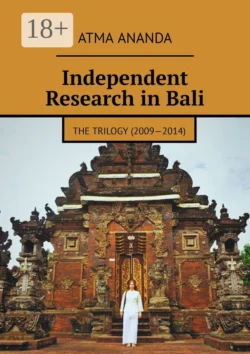Independent Research in Bali. The Trilogy (2009—2014)

Atma Ananda
Тип: электронная книга
Жанр: Религии, верования, культы
Язык: на английском языке
Стоимость: 600.00 ₽
Статус: В продаже
Издательство: Издательские решения
Дата публикации: 15.01.2025
Отзывы: Пока нет Добавить отзыв
О книге: The trilogy was written in 2009–2014 when the author worked in the island of Bali permanently. The original articles were published monthly in “Ubud Community” and “Sanur Community” magazines during almost five years. Finally, they were collected in three books “Kali – Bali” (2010), “Double Bali” (2012), and “Bubble Bali” (2014) for publication on the American service. Then the books appeared on the Amazon world trade network. Now they are all together.Cover photo: The author in Bali (2011).